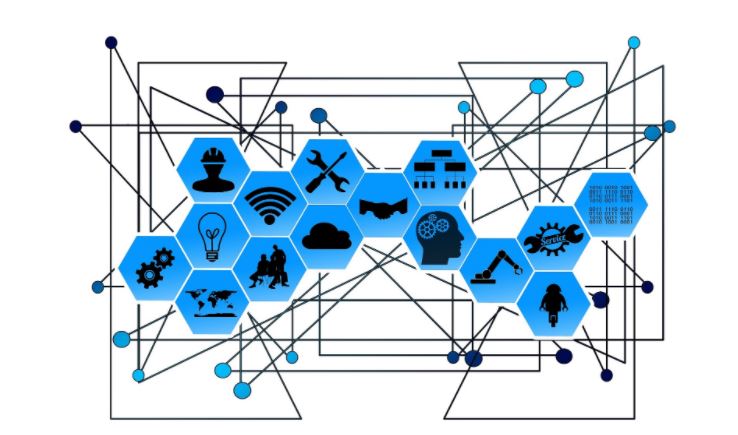Logistics, manufacturing, transport and supply chains are undergoing a period of rapid and unprecedented transformation today. The future of these industries lies in innovation and technology. Not so long ago, digital twins, blockchain, delivery of goods by self-driving vehicles and other innovations that have already become almost a reality have been the subject of science fiction. Today, logistics companies offer a fairly wide range of technological solutions. The latest technologies being developed today are more about speed, accuracy, security and uninterrupted delivery.
1. Digital twins
This technology allows you to create models of absolutely any situations that arise in production. So, the digital twin offers the most optimal versions of building technological processes in order to eliminate undesirable consequences and results in the future. For the transport sector, their benefit lies in the collection of product or packaging data and the ability to identify potential deficiencies based on the information received.
2. Blockchain
One of the promising areas of use of blockchain technology in the field of cargo transportation is to ensure the accuracy and truthfulness of records showing the performance, service history and various other indicators of vehicles over time. Thus, all data exchange is recorded in blocks, this information cannot be deleted or changed, thereby guaranteeing 100% transparency of all processes.
3. Internet of Things (IoT)
IoT enables fleet optimisation and security. IoT solutions provide significant assistance in tracking drivers, reduce fuel costs, control the driving process, can find parking spots, notify the client about the status of the cargo being transported.
4. Self-driving cars
While self-driving vehicles are still in the testing phase, they have shown great potential as tools for logistics and supply chain management. The ability of self-driving vehicles to sense the environment and navigate without human intervention makes these futuristic trucks ideal for delivering goods to customers. Most of the transportation costs are the driver’s salary. Transport and logistics companies with their own fleets will be able to significantly reduce overhead costs by using vehicles without a driver for delivery.
In addition, hot issues in the trucking industry such as a shortage of truckers and long waiting times for loading/unloading will simply disappear with the availability of autonomous, driverless trucks. Another advantage of using self-driving vehicles is that they themselves, thanks to the rigid algorithms and rules embedded in their computer, are better drivers than people: the risk of accidents will be almost zero. They will not lose concentration, doze off, talk on the phone, or send messages while driving.
5. Augmented reality
We are talking about the use of wearable devices (glasses, helmet, smartphone) to instantly receive information about the cargo being handled. This should speed up the search in the warehouse, facilitate the process of sorting and loading.
The markets of America and Asia are interested in technology, the idea is being considered at Amazon, and at DHL they are already testing AR-helmets to reduce the time for collecting parcels. QR codes are automatically scanned, information is transmitted to the screen. The efficiency of logistics in the warehouse has increased by 25% already during the pilot launch of the project.
The ever-increasing role of technology in supply chain functions
For decades, management of transportation, warehouse and order fulfilment has remained at the level of “prehistoric” technologies in the form of isolated storage facilities, inefficient processes and limited information availability. However, technology has changed as business processes in the supply chain have changed. Modern technology is giving small and medium-sized businesses the opportunity to take advantage of innovative tools to provide end-to-end tracking, visualisation and cargo handling.
At the moment, many factors indicate that the technologies used in the supply chain need to be expanded and changed. The reasons for this are problems with the end consumers of the product.
Consumers are already demanding more
Prior to the advent of the Internet, consumers had no opportunity to purchase goods outside retail stores and catalogues. Businesses were focused on delivering the right product, in the right place, at the right time. Today, the consumer would like to have any product, anywhere, anytime. It seemed impossible, however, the vast majority of advanced freight companies have learned to harness consumer demand thanks to the efficiency of modern technology in supply chains. If there are delays in some part of the supply chain, this leads to problems and delays elsewhere, which can ultimately lead to consumer dissatisfaction, which can result in lost profits.
Conclusion
In an ever-changing market, it is not enough for logistics companies to optimise only existing operations; they also need to simultaneously implement new technologies that go far beyond simple automation solutions. The most forward-thinking companies are improving logistics order fulfilment by using combinations of innovative tools, artificial intelligence solutions, IoT devices and more to create a highly optimised supply chain which will meet the changing needs of today’s consumers.
